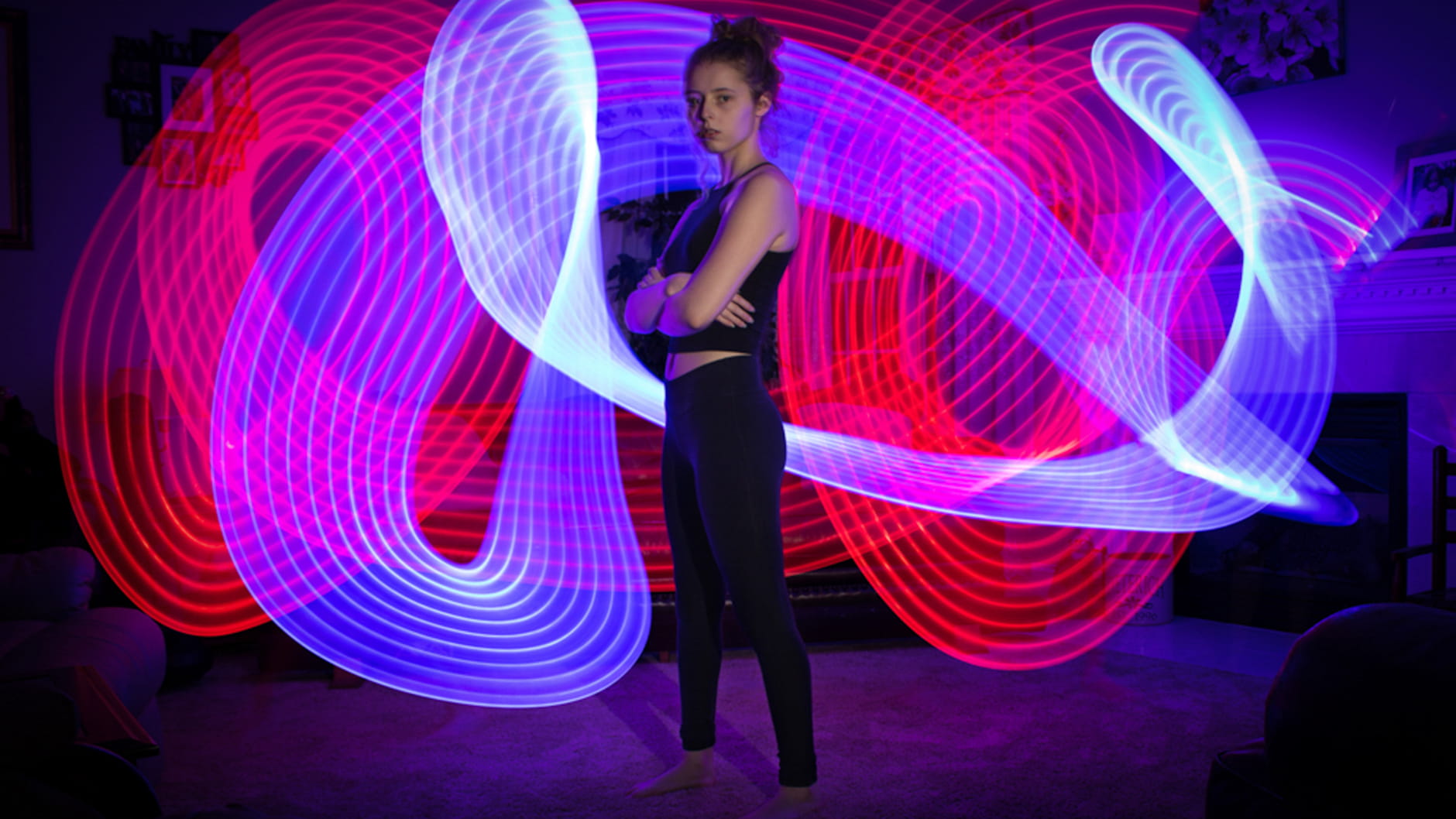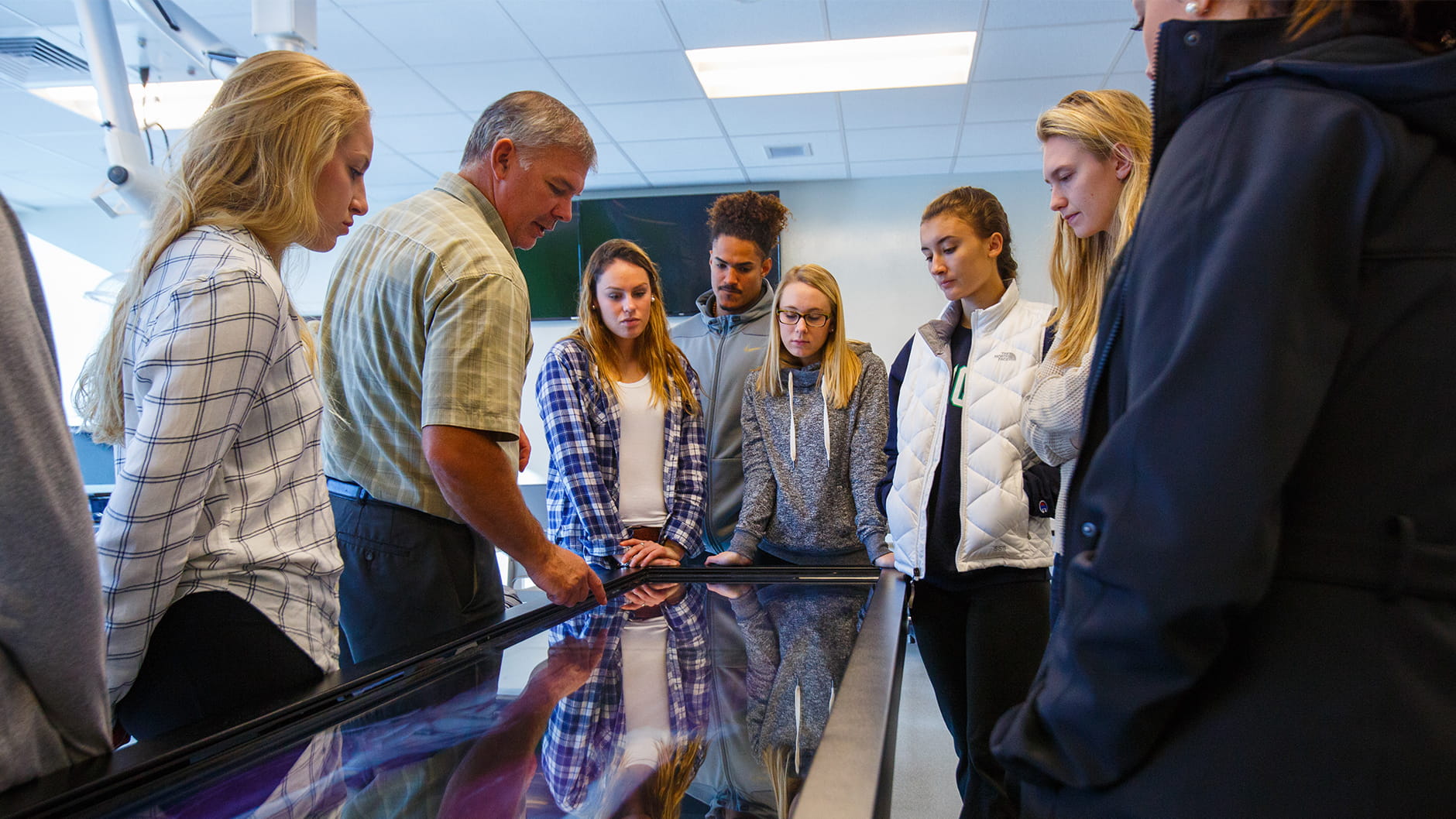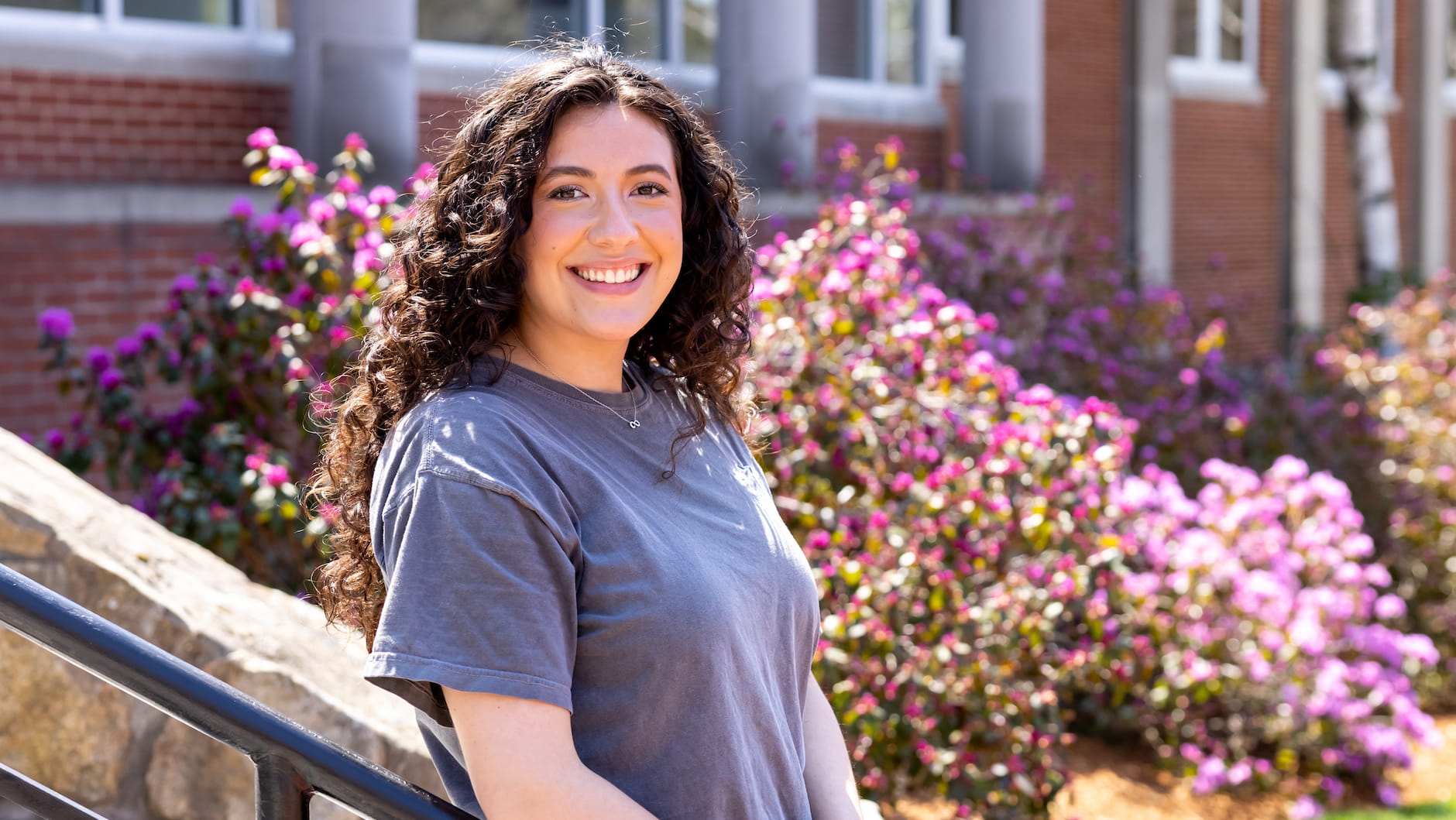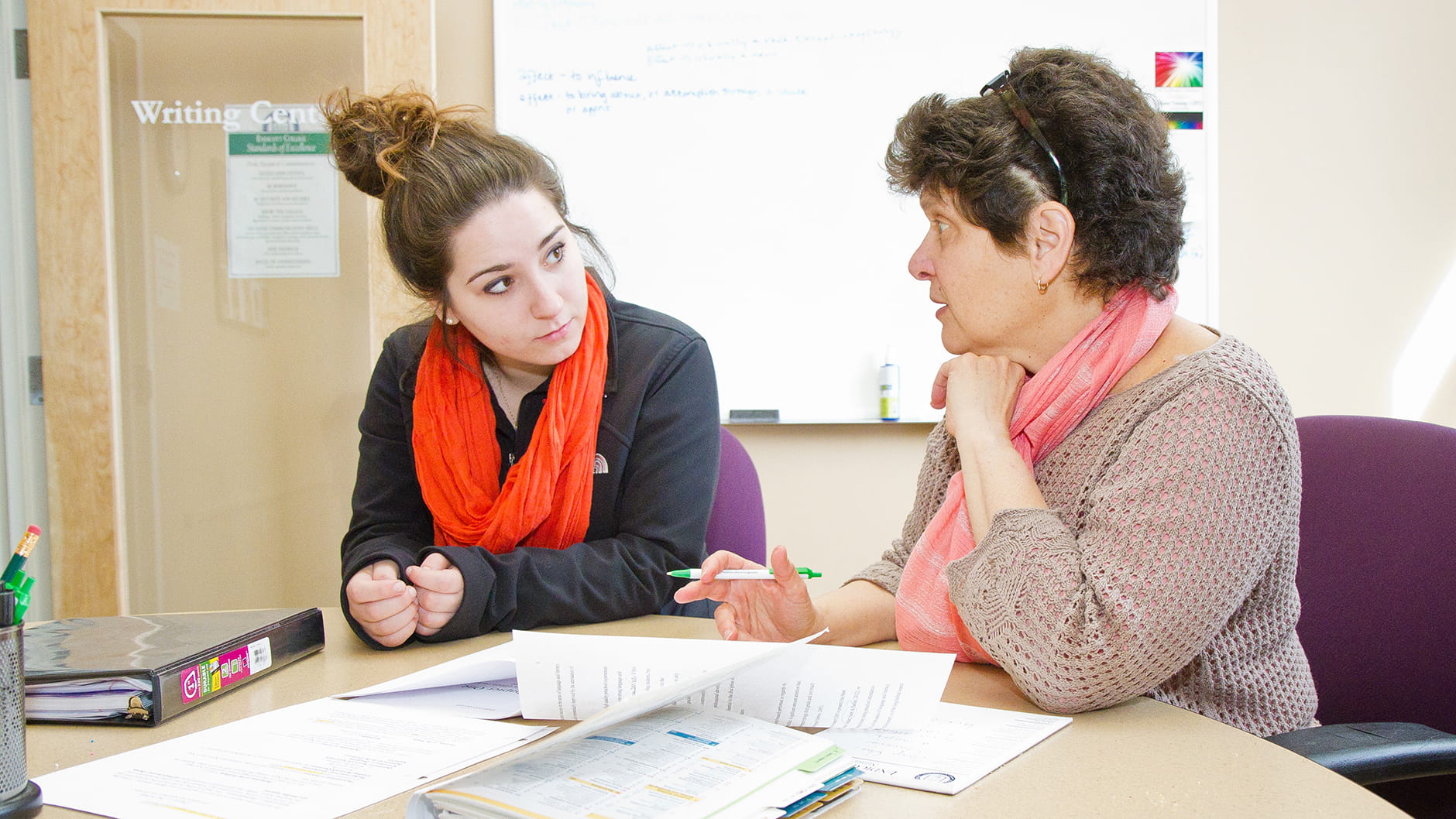Many choose Endicott College for our experiential learning model, whether it be internships, clinicals, or student teaching. Though many disciplines are able to naturally transition to an remote learning strategy, education in the arts and design, due to its very hands-on nature presented by our School of Visual & Performing Arts provided faculty and staff with many unique challenges. We are happy and proud to say that our team was prepared for and excited by the challenge.
The modus operandi at the School of Visual & Performing Arts has always been a lot of interaction with its students and that is exactly how they confronted the change. First, they took notes from the model used by the Van Loan School of Professional Studies who have been considered leaders in online education for many years. Next, they implemented synchronous learning and took the initiative to create new ways to keep their connections strong. Finally, during June the faculty and staff of the arts participated with the rest of the academic community in Endicott’s unique Summer Institute. Today, we want to highlight some of the educators and methods that have made the future of art possible at Endicott and beyond.
Flexibility
People come to Endicott from all means and backgrounds, and that translates to faculty and leadership needing to help them all do work at the same level, even when we are apart. Sometimes, that means being a bit more flexible with requirements, due dates, and even changing, but not lowering standards. When students first left campus to begin online learning, there were absolutely technological limitations.
Professor of Graphic Design Danielle Currier says, “Students access to technology, equipment, and materials was somewhat challenging once we left campus. This made for some creative solutions by faculty to offer flexibility around assignments, workflows, and expectations of end results.”
Chair of Performing Arts and Director of Choirs Becca Kenneally says, “I had to let go of any expectation that it would be the same. There is nothing that is similar. I had to establish new norms, and assess my teaching and their progress by new standards.”
She continues, “I had to find ways to elicit feedback and responses from students in real time that was non-verbal and quick. There are also many aspects of learning music that can be done remotely, often the less appealing or fun parts of the craft like sight-reading and ear-training. Focusing on these components more during this time has strengthened our ensembles.”
The Past and the Adjustment Period
Endicott is lucky to have faculty and staff members who are well-versed in technology, so when the pandemic began the professionals at the School of Visual & Performing Arts had a head start on other art programs across the nation.
Currier says that prior to the coronavirus outbreak, “I have utilized Canvas in all my courses–posting assignments, handouts, announcements, etc. I’ve also utilized Google Hangouts to allow students to do remote internships and still join us in the classroom. I have also utilized a webcam and microphone so that students across the country as far as London could join us via video conferencing for the semester internship class.”
Coordinator of Digital Imaging Michael Miller was in one of the most ideal positions to move online. He says, “As Coordinator of Digital Imaging, as well as Associate Professor of Photography, I was already heavily involved with all things digital with the arts. I have the pleasure of working with not only photography students but also graphic design, interior architecture, and studio arts students in my roll of overseeing both Mac and PC labs as well as managing the digital print lab and photography studio. I am the primary liaison between the School of Visual & Performing Arts and the Information Technology, Academic Technology, and Audio-Visual Departments.”
Miller took all of the available seminars offered by Academic Technology in the two weeks prior to Endicott’s foray into remote learning and he’s very glad as he learned a lot. He says, “I have always wanted to learn how to teach online and was actually excited at the opportunity to learn how to do this as I know it is going to be part of all future higher education learning to some degree, even in the arts. I have learned that there is a different level of orchestration that has to occur when it comes to online teaching.”
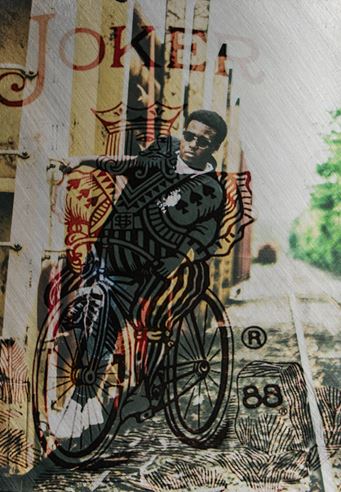 Martin Ferland ’20
Martin Ferland ’20
Miller continues, “I watched the ‘Ted Talk’ research on online attention span to heart and switched gears every fifteen minutes of the 110-minute class. I would lecture or demo and then have students do a critique of the work that was due digitally that week so that I was not the only one speaking or demoing the whole time. I also opted to do live demos versus recorded demos and would then have the students work on printing projects in particular that I had mailed the materials for to keep to my experiential teaching style. Students respond better to something that is not just a prerecording and I received feedback to back that up at the end of class when I asked about their other online learning experiences.”
The Summer Institute
Dean, School of Education Sara Quay, Ph.D. says, “The Institute sessions were developed collaboratively between faculty and staff to support all faculty at Endicott. There will be research-based daily themes around excellence in remote teaching, an opportunity to earn a Best Practices in Remote Teaching Certificate by attending at least eight sessions, incredible keynote speaker Flower Darby, author of Small Teaching Online, and more.”
Miller says, “I am on the Tuesday morning panel and to paraphrase the panel facilitator, Amy Damico. “Based on the Academic Working Group that developed the document on Key Elements of the EC Classroom, the goal is to briefly present different ways some of these elements worked ‘in practice’ during the spring. The speakers on the panel represent different disciplines and teach courses in areas that typically require hands on work.”
He continues, “I will go over how I taught and implemented the ‘online half’ of my class; PHT 306 Experimental and Alternative Media Photography. I will describe my synchronous teaching methods and strategies for this experimental photography and printing class. I will cover organization, lectures, student presentations, digital critiques, hands-on live demos setups, student work time, social media representation of their work, and one-on-one online office hours.”
Currier says, “The focus on remote learning during the Summer Institute will continue to broaden our understanding of the technological and pedagogical modes by which we can offer a quality art and design education. In the future, we will have greater flexibility in reaching, connecting with, and delivering course content in meaningful and constructive ways.”
The Future
The professors and staff members from the School of Visual & Performing Arts are excited and ready to create even more digital opportunities for Fall 2020 and beyond.
Currier says, “I will more regularly remotely connect with guest critics and guest lecturers in the classroom to offer their discipline-specific knowledge and expertise. I will continue to utilize Canvas and may record more of my lectures and demonstrations, posting those for students to refer back to.”
Miller says, “I would definitely like to make more recordings of my demos and post them on Canvas using YuJa. Being able to troubleshoot an assignment, software, camera, or printing issue through Zoom remotely if either a student or I are not in the Walter J. Manninen Center for the Arts will be greatly advantageous. I have already implemented this with colleagues this spring who are printing in the Center for the Arts and need assistance while I am working from home. Before, I was always hesitant about the learning curve and workload of going online with a class, but now I feel very comfortable with both and would be more than happy to teach a photography class online.”
He continues, “I see no reason why we cannot start offering more online or hybrid classes in the arts. While the majority of us at the School of Visual & Performing Arts are still new to this form of teaching, we have all gotten our feet wet and now have a better understanding what it is like and what it takes to teach online.”
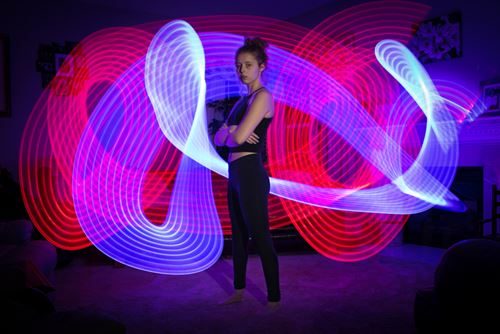 Lindsay Dieterich ’20
Lindsay Dieterich ’20
Kenneally says, “We will potentially remain almost completely online, as singing and playing wind instruments are high-risk spreading activities. If that happens we will start projects on recording audio software such as SoundTrap and ProTools to create virtual music performances. We will start units on sight-reading and ear-training, and more solo work.”
She continues, “There are currently apps in development that would ease the ability to synchronize recordings better. Right now, even if all participants sing or play the same song at the same speed starting at the same time, when all are combined there are microsecond discrepancies due to differences in recording equipment, software, memory, and sharing tools. People are also working on ways to better rehearse over streaming technology with the possibility of people being able to actually make sounds together at the same time without sound cutting out or time lapses. Without these advances, things will stay similar to the way we have been learning, but better.”
Community Bonds
When it comes right down to it though, the determination and cooperation demonstrated by our student body and educators has helped Endicott rise to the challenge of remote learning and will continue to serve us as the world moves quickly toward hybrid learning.
Currier says, “I think our sense of community and connection with faculty sets Endicott and the School of Visual & Performing Arts apart. We were not so much offering online learning, but remote learning. Meaning that there was a lot more connection and collaboration with faculty and other students—both synchronously and asynchronously—where regular, consistent contact was emphasized. Being accessible to students and encouraging them to participate and stay engaged was key to maintaining that connection and our sense of community.”
Indeed, a supreme effort was put in by the team when it came to maintaining that sense of community such as:
· Creating an online gallery of student thesis work to celebrate their work and share with the community.
· Students participating in an evening portfolio reviews with outside industry reviewers.
· Meeting up virtually to “toast” the seniors and congratulate them.
· Guest artists talking and sharing with students both in and outside of regular class hours (with recordings being available after the fact).
All three professors agreed that synchronous learning was key. Miller says, “I really thought the that the synchronous teaching was important as we were coming out of the ‘community’ environment we have with our students in the School of Visual & Performing Arts and at Endicott in general. Given the troubling times and isolation of this pandemic, there was a comfort in being together live in class and I know the students were on board with that and looked forward to this small semblance of normalcy. To be able to respond live to questions and read the body language of the students was also important to me in teaching online.”
Resources
Miller says, “The support we have through Academic Technology and Information Technology makes an art education at Endicott more adaptable to online learning. We have a team of highly experienced and knowledgeable individuals who are behind us with tech support and training we need. I think there are certain classes that are more adaptable than others to teaching online in our photography program in particular, but there are aspects of each of these that could be taught in a hybrid class.”
The Results
Of course, none of these efforts matter if results are not produced, but our Endicott students continued to make strides virtually.
Miller provided the images shown throughout this article to showcase some of the incredible work his students produced.
Kenneally’s team even produced a short documentary to explain more about their coordinated efforts to teach music.
Dean of Visual and Performing Arts Mark Towner says, “Despite the adversity 2020 presented, there is much to celebrate. The Summer Institute is evidence of the strength, tenacity, and adaptability of our staff and faculty. The quality of the recent senior thesis projects in the arts and design fields was very high, and that enrollment we maintained a healthy enrollment for the fall where some other schools are struggling. I am very proud of all of the work our team puts in daily to offer quality art education both in-person or remotely.”
